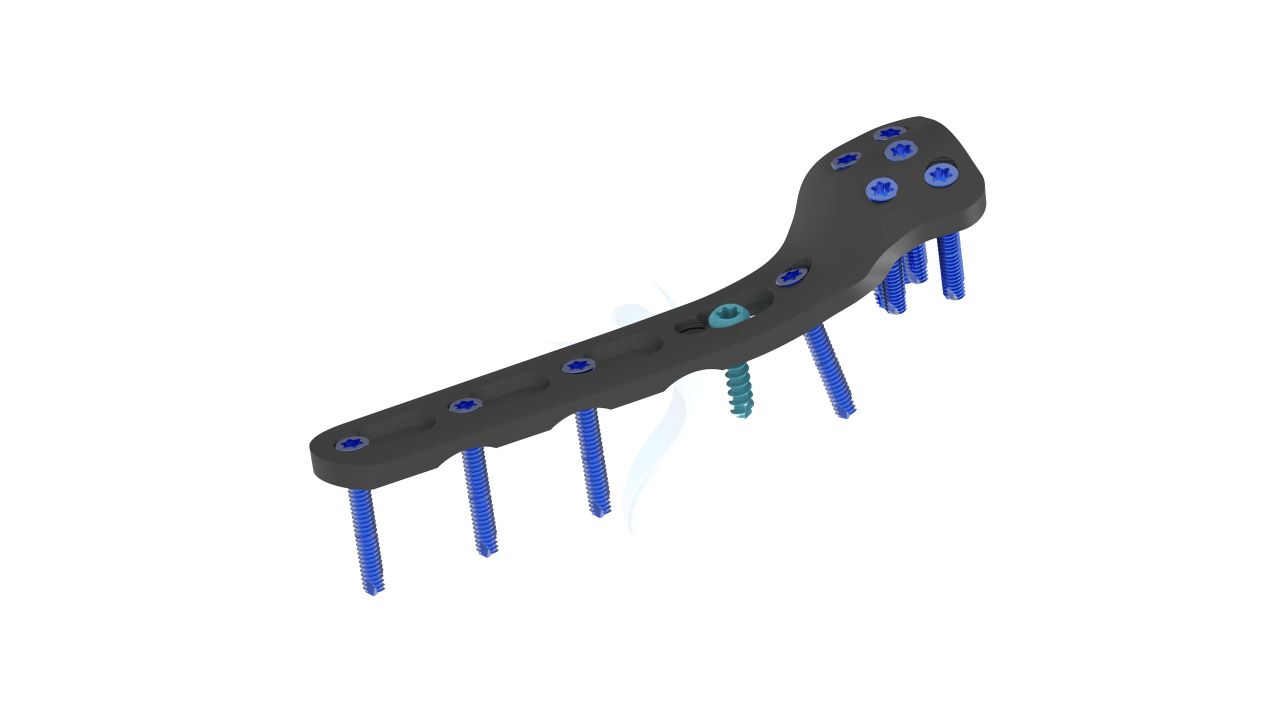Radial Head Plates - Rim 2.4 mm
Product Overview
Introducing our advanced solution, the Radial Head Plates (Rim) 2.4mm. Expertly crafted for orthopedic precision, these plates are meticulously contoured to address fractures along the proximal radius rim. With a focus on stability and support, they offer a tailored approach to fracture fixation. Crafted from top-grade materials, these plates provide durability and reliable performance. With versatile screw options and a streamlined design, our Proximal Radius Rim Plates empower orthopedic surgeons to navigate complex fractures with confidence. Elevate patient outcomes with the precision and innovation of our cutting-edge plates.








Product Uses
- Fracture Fixation : These plates are designed to effectively stabilize and fixate fractures along the proximal radius rim, promoting proper bone healing and alignment.
- Osteotomy Procedures : Proximal Radius Rim Plates assist orthopedic surgeons in precise bone repositioning during osteotomy procedures, ensuring accurate alignment.
- Non-Union Fractures : Ideal for cases of non-union fractures, these plates provide the necessary stability to encourage successful bone fusion.
- Malunion Corrections : They are utilized in correcting malunions by repositioning and stabilizing the bone for improved alignment and function.
- Trauma Management : Proximal Radius Rim Plates play a crucial role in managing traumatic injuries to the proximal radius, providing stability and support.
Product Specification
- Plate Thickness : 2.4 mm
- Material : Medical-grade titanium alloy
- Plate Length : Available in various lengths for customization (please specify).
- Plate Design : Anatomically contoured to match the proximal radius rim anatomy.
- Screw Holes : Multiple holes for flexible screw placement.
- Screw Compatibility : Designed for use with 2.4 mm locking and non-locking screws.
- Locking Mechanism : Locking screws for enhanced stability and angular stability.
Radial Head Plates -(Rim) 2.4mm Sizes
Comprehensive Guide for Radial Head Plates - (Rim) 2.4mm
- Patient Assessment : Review medical history, allergies, medications, and overall health status.Perform imaging (X-rays, CT scans) to assess fracture pattern and severity.
- Surgical Planning : Consult with the orthopedic surgeon to determine surgical approach, plate size, and screw placement.
- Informed Consent : Explain the procedure, potential risks, benefits, and alternatives to the patient. Obtain signed consent.
- Preoperative Tests : Conduct necessary blood tests, ECG, and other relevant tests to ensure the patient's fitness for surgery.
- Skin Preparation : Instruct the patient to shower with an antibacterial soap the night before or the morning of surgery.
- Anesthesia : Administer anesthesia as discussed with the anesthesia team.
- Incision and Exposure : Make an incision to access the fractured proximal radius head and neck area.
- Fracture Reduction : Carefully align and reduce the fracture to restore proper bone alignment.
- Plate Placement : Select and position the appropriate Proximal Radius Plate. Secure it to the bone using screws.
- Screw Fixation : Insert locking and non-locking screws through the plate to stabilize the fracture.
- Recovery Room : Monitor the patient's vital signs and awakening from anesthesia.
- Pain Management : Administer pain relief medication as necessary and monitor pain levels.
- Immobilization : Apply a cast, splint, or sling, as prescribed by the surgeon, to protect the treated area.
- Follow-Up Care : Schedule follow-up appointments for wound checks and X-rays to monitor healing progress.
- Physical Therapy : Begin a customized rehabilitation program to regain strength, mobility, and function.













.png)




